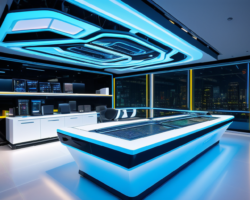Choosing the Wrong Dance Style
When it comes to starting a dance journey, one of the most critical decisions to make is choosing the right dance style. The wrong choice can lead to dissatisfaction, frustration, and eventually quitting. So, how do you make sure you select the correct dance style for yourself?
1. Identify your interests and preferences: Before diving into any dance style, it is essential to understand your personal interests and preferences. Do you enjoy the gracefulness of ballet or the energy of hip hop? Are you drawn to the rhythm of salsa or the storytelling of contemporary dance? Take some time to explore various styles and see which ones resonate with you the most.
2. Consider your physical abilities: While you might be passionate about a particular dance style, it is crucial to consider your physical abilities and limitations. Some dance styles require high flexibility, strength, or endurance, which may not align with your current capabilities. Start with a style that complements your physicality and gradually work on developing the required skills.
3. Research and seek guidance: Once you have narrowed down your preferences, conduct thorough research on the dance styles you are interested in. Look for videos, articles, and testimonials to gain insight into what each style entails. Additionally, reach out to dance instructors or experienced dancers for advice and guidance. They can provide valuable insights and help you make an informed decision.
Ultimately, the aim is to select a dance style that not only excites you but also suits your abilities. Remember, there is no right or wrong dance style – it all comes down to personal preference and individuality. So, take your time, explore different options, and embark on a dance journey that brings you joy and fulfillment.
Neglecting Proper Warm-up and Stretching
When it comes to physical activity, many people tend to overlook the importance of warm-up and stretching exercises. However, neglecting these crucial steps can lead to various injuries and hinder your overall performance. Warm-up exercises help increase blood flow to the muscles and prepare them for the intense physical activity to come. On the other hand, stretching exercises improve flexibility, which is essential for preventing muscle strains and improving range of motion.
If you skip proper warm-up and stretching routines before engaging in any physical activity, you are more likely to experience muscle stiffness and soreness. Without warming up, your muscles are not adequately prepared for the stress and demand placed on them during exercise. This can lead to strained muscles, sprained ligaments, or even more severe injuries. Additionally, ignoring stretching exercises can lead to reduced flexibility, limiting your range of motion and making you more prone to injuries.
It is essential to incorporate warm-up exercises into your routine to enhance your performance and prevent injuries. A warm-up can include activities such as jogging in place, jumping jacks, or even a brisk walk. Spend at least 5 to 10 minutes performing these activities to elevate your heart rate and increase blood flow to your muscles. Additionally, stretching exercises should not be neglected. Incorporating static stretches, such as hamstring stretches or shoulder stretches, can help improve flexibility and reduce the risk of muscle strains.
- Warm-up exercises increase blood flow to muscles.
- Stretching exercises improve flexibility and prevent muscle strains.
- Neglecting warm-up and stretching can lead to injuries.
- Proper warm-up includes activities like jogging or brisk walking.
- Static stretches should be incorporated to improve flexibility.
| Benefits of Warm-up Exercises | Benefits of Stretching Exercises |
|---|---|
|
|
Skipping Technique and Form Training
Skipping, also known as jump rope, is a popular cardiovascular exercise that offers numerous benefits. It is not only a fun and affordable way to improve your fitness level, but it also helps to improve coordination, agility, and endurance. However, many people tend to overlook the importance of proper technique and form when it comes to skipping. Neglecting proper form can lead to inefficiency, increased risk of injury, and limited progress in your skipping routine. In this blog post, we will explore the significance of technique and form training in skipping and provide you with helpful tips to improve your skipping skills.
Proper technique and form are crucial in any physical activity, and skipping is no exception. By maintaining the correct posture and executing the right movements, you can maximize the benefits of skipping and minimize the risk of injury. Here are some key aspects to consider when it comes to technique and form:
- Body Alignment: Stand tall with your head aligned with your spine. Engage your core muscles to maintain stability throughout the movement.
- Arm Position: Keep your elbows close to your sides and bend them at a 90-degree angle. Use a relaxed but controlled motion to swing your arms, avoiding excessive movement.
- Hand Placement: Hold the handles of the skipping rope with a firm but relaxed grip. Your hands should be slightly in front of your hips, with your wrists and forearms doing most of the rotation.
These are just a few examples of the importance of technique and form in skipping. By paying attention to these details and practicing proper form, you can enhance the effectiveness of your skipping routine and reduce the risk of strain or injury on your joints and muscles.
| Benefits of Proper Technique and Form in Skipping |
|---|
| 1. Improved Efficiency: Proper technique allows you to skip efficiently, meaning you can maintain a consistent rhythm and expend less energy while achieving the desired cardiovascular benefits. |
| 2. Reduced Risk of Injury: Performing skipping exercises with improper form can strain your joints and muscles, leading to injuries. By focusing on technique and form, you can minimize the risk of strains, sprains, and other related injuries. |
| 3. Enhanced Coordination and Agility: Practicing proper form helps to synchronize your movements, improving coordination and agility. As you become more skilled, you can incorporate various footwork patterns and tricks to challenge yourself further. |
| 4. Increased Endurance: Efficient skipping technique allows you to maintain a steady pace for a longer duration, thereby improving your cardiovascular endurance over time. |
In conclusion, skipping is an effective and enjoyable exercise, but proper technique and form are essential for reaping its full benefits. By ensuring correct body alignment, arm position, and hand placement, you can make the most of your skipping routine. Remember to always warm up before skipping, engage in regular stretching exercises, and gradually increase the intensity and duration of your workout. By incorporating these tips into your training, you can prevent injuries, enhance your coordination, and achieve optimal results in your skipping sessions.
Ignoring Rest and Recovery
Rest and recovery are crucial components of any fitness routine, including dance. However, many dancers often overlook the importance of rest and recovery, which can have serious consequences for their physical and mental well-being. Engaging in excessive training without allowing adequate time for rest can lead to injuries, exhaustion, and burnout. In this blog post, we will explore the reasons why rest and recovery are essential for dancers and discuss the ways in which dancers can incorporate these practices into their training regimen.
One of the main reasons why rest and recovery are essential for dancers is to prevent injuries. Dance requires repetitive movements and puts strain on various muscles and joints. Without proper rest, these structures can become overworked and more susceptible to injuries such as sprains, strains, and stress fractures. By incorporating rest days into their training schedule, dancers give their bodies time to repair and rebuild damaged tissues, reducing the risk of injury.
In addition to preventing injuries, rest and recovery also play a vital role in enhancing performance. When dancers push themselves too hard without taking breaks, they may experience decreased strength, flexibility, and endurance. Overtraining can lead to fatigue and diminished performance quality. By allowing ample time for rest, dancers give their bodies the chance to replenish energy stores, repair muscles, and improve overall performance on the dance floor.
- It is important to note that rest does not just refer to taking days off from dancing. Rest can also involve incorporating other activities into the routine that promote relaxation and rejuvenation. For example, practicing mindfulness techniques, such as meditation or yoga, can help dancers relax their minds and release physical tension.
- Another aspect of rest and recovery is proper sleep. Sleep is when the body truly restores and rejuvenates itself. Dancers should strive to get an adequate amount of sleep each night to support their physical and mental health. This will not only facilitate better performance but also improve overall well-being.
- Additionally, nutrition plays a vital role in rest and recovery. Fueling the body with the right nutrients not only aids in recovery but also helps prevent injuries. Incorporating a balanced diet that includes high-quality proteins, carbohydrates, fats, and ample hydration can support muscle repair and replenish energy levels.
In conclusion, ignoring rest and recovery can have serious consequences for dancers. To maintain optimal physical and mental health, it is crucial for dancers to prioritize rest and recovery as part of their training routine. By allowing adequate time for rest, incorporating relaxation techniques, ensuring quality sleep, and fueling the body with the right nutrition, dancers can enhance their performance, prevent injuries, and enjoy a fulfilling dance journey.
| Prevents injuries | Enhances performance |
|---|---|
| Allows time for repair and rebuilding of tissues | Replenishes energy stores |
| Reduces the risk of overuse injuries | Improves strength, flexibility, and endurance |
| Helps prevent fatigue and burnout | Supports overall well-being |
Lack of Communication with Instructors
When it comes to learning any new skill, especially in a specialized field like dance, communication with instructors is crucial for success. Unfortunately, this is an aspect that is often overlooked or disregarded by many students. Lack of communication with instructors can hinder progress, lead to misunderstandings, and even result in injuries. This blog post will discuss the importance of maintaining open lines of communication with instructors and how it can enhance the learning experience.
One of the main reasons why communication with instructors is vital is because they are the experts in their field. They have the knowledge and experience to guide students through the learning process, provide valuable feedback, and make necessary corrections. Without proper communication, students may struggle to understand the techniques or concepts being taught, leading to frustration and limited progress. By actively engaging with instructors and seeking clarification when needed, students can ensure they are receiving the guidance and support necessary for improvement.
In addition, communication with instructors allows for personalized instruction. Each student is unique and may require different strategies or modifications to fully grasp the material. By discussing individual goals, concerns, and limitations with instructors, students can receive tailored instruction that meets their specific needs. This not only enhances the learning experience but also helps to prevent injuries by ensuring proper technique and execution.
Furthermore, open lines of communication foster a positive learning environment. When students actively communicate with their instructors, it creates a sense of trust and mutual respect. Instructors appreciate students who are engaged and show a genuine interest in their learning. This can lead to stronger mentorship relationships and a more enjoyable dance experience overall. By regularly communicating with instructors, students can also stay informed about any updates or changes in class schedules, performances, or other important information.
- Improved progress and better understanding of technique.
- Personalized instruction tailored to individual needs.
- Fostering a positive learning environment and building strong mentorship relationships.
- Staying informed about important class updates and information.
| Benefits of Communication with Instructors |
|---|
| Improved progress and better understanding of technique. |
| Personalized instruction tailored to individual needs. |
| Fostering a positive learning environment and building strong mentorship relationships. |
| Staying informed about important class updates and information. |
Failing to Set Realistic Goals
Setting goals is an essential part of any endeavor, including dance. However, many dancers fall into the trap of setting unrealistic goals, which can ultimately hinder their progress and lead to frustration. It is important to understand that dance is a journey, and progress takes time and effort.
One common mistake dancers make is setting goals that are too ambitious. While it is admirable to aim high, setting goals that are beyond your current skill level can set you up for disappointment. Instead, it is crucial to set realistic and attainable goals that can be achieved with consistent practice and dedication.
In addition to setting realistic goals, it is also important to break them down into smaller milestones. This allows you to track your progress and stay motivated along the way. For example, if your ultimate goal is to perform a complex dance routine, you can set smaller goals such as mastering specific dance moves or improving your flexibility.
Another aspect to consider when setting goals is to be specific. Instead of setting a vague goal like “become a better dancer,” try to define what exactly you want to improve. This could be mastering a particular dance style, improving your technique, or becoming more confident on stage. Being specific not only helps you clarify your intentions but also allows you to measure your progress more effectively.
Lastly, it is crucial to be flexible and adaptable with your goals. Dance is a dynamic art form, and as you progress, your goals may change or evolve. It is important to reassess and adjust your goals accordingly, adapting to new challenges and opportunities that arise. This flexibility ensures that you stay motivated and engaged in your dance journey.
Content Rich Only
- Setting realistic goals is crucial for dancers to progress effectively.
- Avoid setting overly ambitious goals that may lead to disappointment.
- Break down goals into smaller milestones to track progress and stay motivated.
- Be specific in defining your goals to focus on areas that need improvement.
- Be flexible and adaptable with your goals to embrace new challenges and opportunities.
Table: Common Mistakes in Goal Setting
| Mistake | Explanation |
|---|---|
| Setting unrealistic goals | Goals that are beyond current skill level can lead to frustration. |
| Lack of specificity | Vague goals make it challenging to measure progress effectively. |
| Failing to break down goals | Not breaking down goals into smaller milestones can be overwhelming. |
| Resistance to change | Being unwilling to adapt goals may hinder growth and progress. |
Not Paying Attention to Safety Precautions
Safety precautions are essential in any activity or sport, and dance is no exception. It is important for dancers to prioritize their well-being by practicing safe techniques and taking necessary precautions. Unfortunately, some dancers may neglect these precautions, which can lead to injuries and setbacks. In this blog post, we will explore the importance of paying attention to safety precautions in dance and why it should be a priority for every dancer.
First and foremost, dancers should always listen to their bodies and not push themselves beyond their limits. Ignoring physical discomfort or pain can lead to serious injuries that may require long periods of rest and recovery. It is crucial to recognize when it is time to take a break or seek medical attention to prevent small issues from turning into bigger problems.
Secondly, proper warm-up and stretching routines are vital to prevent strains and muscle injuries. Dancers should dedicate sufficient time before each training session or performance to warm up their bodies and prepare their muscles for the physical demands of dancing. Stretching exercises should also be included to increase flexibility and reduce the risk of muscle tears or pulls.
In addition to warm-up and stretching, dancers should also be mindful of their technique and form. Skipping technique and form training is a common mistake that may lead to poor alignment, muscle imbalances, and ultimately, injuries. It is important to regularly review and refine dance techniques under the guidance of instructors to ensure safe and effective movement.
| Why Paying Attention to Safety Precautions is Crucial | Benefits of Prioritizing Safety |
|---|---|
|
|
By not paying attention to safety precautions, dancers not only put themselves at risk but also compromise their progress and potential. It is crucial to prioritize safety in all aspects of dance training, from warm-up and stretching to technique and form. Remember, taking the necessary precautions not only enhances your dance experience but also ensures longevity in this beautiful art form.
Frequently Asked Questions
Q: How can choosing the wrong dance style affect a dancer’s progress?
A: Choosing the wrong dance style can hinder a dancer’s progress as they may not enjoy or excel in that particular style, leading to frustration and lack of motivation.
Q: Why is it important to warm up and stretch before dancing?
A: Warming up and stretching before dancing helps to prevent injuries, increase flexibility, and enhance performance by preparing the muscles and joints for movement.
Q: What are the consequences of skipping technique and form training?
A: Skipping technique and form training can lead to poor execution of dance moves, limited progress, and a higher risk of injuries. It is crucial to master the fundamentals for a strong foundation in dance.
Q: Why is rest and recovery important for dancers?
A: Rest and recovery allow the body to repair and rebuild itself, prevent overuse injuries and fatigue, and improve overall performance and longevity in dance.
Q: How does lack of communication with instructors impact a dancer’s learning?
A: Lack of communication with instructors can hinder a dancer’s progress as they may miss out on valuable feedback, guidance, and corrections. Effective communication facilitates better learning and improvement.
Q: What are the risks of setting unrealistic dance goals?
A: Setting unrealistic dance goals can lead to disappointment, burnout, and potential physical and mental strain. It is important to set goals that are achievable and aligned with an individual’s ability and training level.
Q: Why should dancers pay attention to safety precautions?
A: Paying attention to safety precautions helps prevent dance-related injuries, promotes overall well-being, and allows dancers to enjoy their passion for dance without risking their health.





